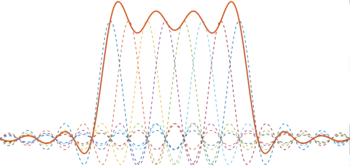Optical Communications
Optical data transmission over silica fibers is one of the most dynamic fields in communications. State-of-the-art systems operate at a per-channel data rate of 100Gbit/s; research currently addresses systems up to 1Tbit/s. With Wavelength-Division-Multiplexing, transmission of tens of Tbit/s over one fiber is feasible.
In this vibrant field, our group carries out research at the intersection of Communications Engineering, Physics, and Information Theory, to investigate and optimize high-capacity optical communication systems and subsystems of the future.
Concrete research topics are:
- Modulation, Signal Processing, and Coding for Nonlinear Fiber-Optic Communication Systems
- Adaptive signal Predistortion to maximize throughput of optical transmitters
- Nonlinear Communications over fibers using the Nonlinear Fourier Transform
- Capacity of novel optical fibers (Few-Mode Fibers, Multi-Core Fibers)
Signal Transmission over Copper Wires
Although optical fibers constitute the backbone of the world-wide communications network, communication over copper-wires is still dominating in access- and in-house-networks, within cars, and industrial plants. Here, our research aims at optimizing methods to reliably communicate over various kinds of copper networks.
Recent, and actual, topics are:
- Modelling of the transmission characteristics of copper networks in vehicles
- Powerline communications in vehicles
- Adaptive modulation using Orthogonal Frequency Division Multiplexing
- Implementation of subsystems in FPGAs
Links
- BR Podcast mit Prof. Norbert Hanik: Unterseekabel - Lebensadern der Informationsgesellschaft
- SZ Artikel mit Prof. Norbert Hanik: So werden Unterseekabel repariert
- SRF Podcast mit Prof. Norbert Hanik: Was hat eine Googlesuche mit dem Vulkanausbruch vor Tonga zu tun?

